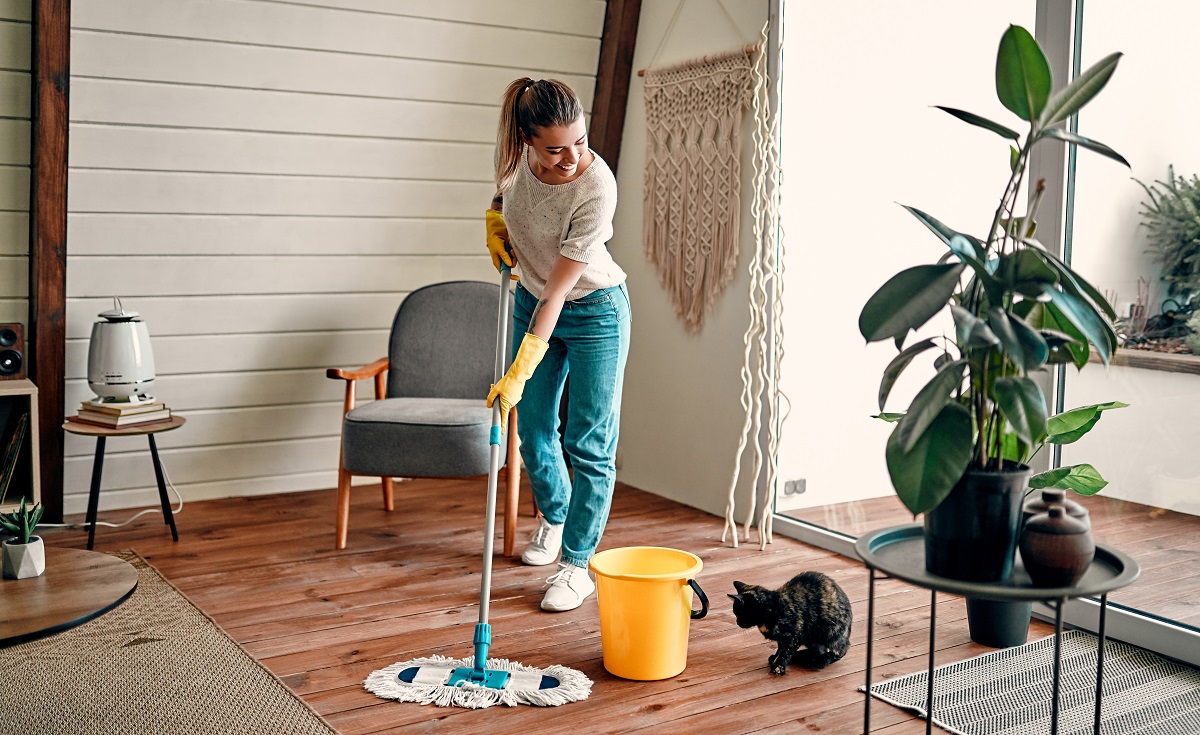Comprehensive Everyday Cleaning Tips: From Defrosted and Cleaned Every Few Months to Removing Clutter
Comprehending the Need for Thoroughly Disinfecting and Sanitizing Often Touched Surface Areas in High-Traffic Locations
In the realm of public health and wellness and security, the thorough disinfection and sanitization of frequently touched surfaces in high-traffic locations stand as extremely important measures in preventing the spread of hazardous microorganisms. The relevance of this method extends much past simple tidiness, diving right into the world of illness prevention and neighborhood wellness. By discovering the numerous aspects of surface disinfection, from the threats connected with disregarding cleansing methods to the reliable techniques that can be employed, a more clear understanding arises of the crucial function these practices play in safeguarding public health and wellness. As we navigate this conversation, it becomes evident that the implications of comprehensive surface area disinfection reverberate not only within the boundaries of a particular environment but also reverberate on a wider range, influencing the health and wellness of people across diverse public settings.
Significance of Surface Sanitation
Emphasizing the complete sanitation of high-traffic surface areas is crucial in preserving a sanitary atmosphere and protecting against the spread of hazardous pathogens. High-touch surfaces such as door manages, light buttons, elevator buttons, and kitchen counters act as reproducing premises for infections and germs. Routine disinfection of these surface areas is critical to reduce the threat of contamination and transmission of health problems.
By implementing a robust disinfection procedure, businesses and institutions can produce a much safer atmosphere for staff members, visitors, and customers. Proper surface area disinfection not just mitigates the spread of transmittable illness but likewise infuses self-confidence in the cleanliness and safety and security of the facilities. This proactive approach shows a commitment to wellness and wellness, which is specifically crucial in high-traffic areas where the probability of exposure to virus is increased.
Moreover, surface area sanitation plays a critical function in total infection control techniques. Combined with hand hygiene techniques, using masks, and keeping physical distancing, extensive disinfection of high-touch surface areas forms an extensive protection against the transmission of unsafe bacteria. Focusing on surface disinfection is a necessary component of an alternative method to wellness and safety in common rooms.
Risks of Disregarding Cleansing Practices
Overlooking complete sanitation of high-traffic surfaces substantially enhances the risk of viral and bacterial contamination, posturing a significant risk to the health and wellness of people frequenting these spaces. Failing to apply proper cleaning techniques can bring about the buildup and spread of hazardous microorganisms, including microorganisms and infections, on frequently touched surfaces such as doorknobs, handrails, elevator buttons, and counter tops.

Moreover, ignoring the relevance of extensive cleansing not just jeopardizes the health of individuals however additionally threatens efforts to keep a clean and hygienic environment. It is important to identify the importance of correct sanitation protocols in protecting against the spread of infections and guarding public health and wellness.
Reliable Sanitation Methods
To preserve optimal sanitation and reduce the threat of contamination on high-traffic surface areas, using reliable sanitation techniques is necessary. One of the most common and effective sanitation techniques is making use of chemical anti-bacterials.
An additional efficient technique is making use of UV-C light. UV-C light has actually been shown to be effective in eliminating a large selection of bacteria by interrupting their DNA structure, thus stopping them from reproducing. It is vital to utilize UV-C light properly, making sure that the appropriate intensity and direct exposure time are applied to accomplish the desired sanitation outcomes.
Furthermore, employing vapor cleansing as a sanitation approach can be highly efficient, specifically on surface areas that are heat-resistant. Vapor can pass through permeable surfaces and kill germs, original site viruses, and other virus successfully. When using heavy steam cleansing, it is necessary to ensure that the surface reaches the called for temperature for an adequate amount of time to ensure proper disinfection.
Effect On Public Wellness
The maintenance of high criteria of tidiness and disinfection on high-traffic surfaces plays a crucial function in safeguarding public wellness. Often touched surface areas in locations with high step, such as doorknobs, hand rails, elevator switches, and washroom centers, serve as reproducing premises for harmful microorganisms.
In high-traffic areas like flight terminals, institutions, hospitals, and public transportation systems, the effect of extensive disinfection procedures can not be downplayed. Focusing on the sanitization of frequently touched surface areas is an aggressive method to advertising public wellness and improving the security of individuals in common areas.
Carrying Out Routine Cleaning Up Methods
Promptly setting up and sticking to a constant routine of cleaning procedures is critical for maintaining the sanitation and security of high-traffic surface areas. Regular cleansing procedures are necessary in avoiding the accumulation of germs and microorganisms on frequently touched surface areas, specifically in locations with high foot traffic. By implementing an organized technique to cleaning, organizations can successfully decrease the threat of illness transmission and produce a much healthier atmosphere for employees, clients, and the general public.
To develop an efficient cleansing routine, it is crucial to identify high-traffic locations that call for frequent focus. These areas might include doorknobs, handrails, lift buttons, toilet facilities, and common equipment. Applying a routine cleansing routine that targets these surfaces multiple times a day can considerably lower the spread of damaging microorganisms and viruses.
In addition, using ideal cleaner and anti-bacterials is crucial to ensuring that surfaces are completely disinfected. Regular training of cleaning up team on proper cleaning methods and the value of adherence to the cleansing schedule is also important in preserving a sanitary setting. By focusing on consistent cleaning protocols, organizations can promote the health and wellness and wellness of people who communicate with these high-traffic surfaces.

Final Thought
In final thought, it is vital to prioritize detailed sanitation and sanitization of frequently touched surfaces in high-traffic locations to avoid the spread of hazardous pathogens and preserve public health. Neglecting proper cleansing techniques Discover More can boost the danger of contamination and transmission of diseases. By applying routine cleaning methods and utilizing effective sanitation approaches, we can produce a safer go right here setting for everybody (Scrub the Surfaces). It is critical to acknowledge the importance of keeping clean surface areas in high-traffic locations to make sure the well-being of the neighborhood.
In the realm of public health and wellness and safety and security, the meticulous disinfection and sanitization of often touched surfaces in high-traffic locations stand as extremely important steps in protecting against the spread of dangerous pathogens. By exploring the different elements of surface sanitation, from the risks linked with disregarding cleaning procedures to the reliable methods that can be utilized, a clearer understanding emerges of the crucial function these methods play in guarding public wellness.In addition, employing steam cleansing as a sanitation technique can be extremely efficient, particularly on surfaces that are heat-resistant. When utilizing heavy steam cleaning, it is essential to guarantee that the surface area gets to the called for temperature level for an enough quantity of time to assure proper disinfection.
In conclusion, it is essential to prioritize comprehensive sanitation and sanitization of regularly touched surface areas in high-traffic areas to avoid the spread of damaging virus and keep public wellness.